[urban interfaces] Blogs
Guest post Alvaro Lopez about the [urban interfaces] workshop: “Who’s the Rain Today???”
The following essay was written by Alvaro Lopez, as a final reflection on the [urban interfaces] critical making workshop “The Right to the City & Urban Commons”.
Thanks Alvaro!
Who’s the Rain Today???: Diffractive Spaces,
Tentacular Thinking and Queer Interventions in the Reimagining
of Urban Interfaces
Design concept: Who’s the Rain Today??? by
Karoliina Haapalehto, Brian Hulsebos, Dirk Lent,
Lidewei Reitsma and Alvaro Lopez
Queer Thinking and Thinking Queer: Presenting a Design Concept, an Urban Intervention and a Pressure Cooker Workshop.
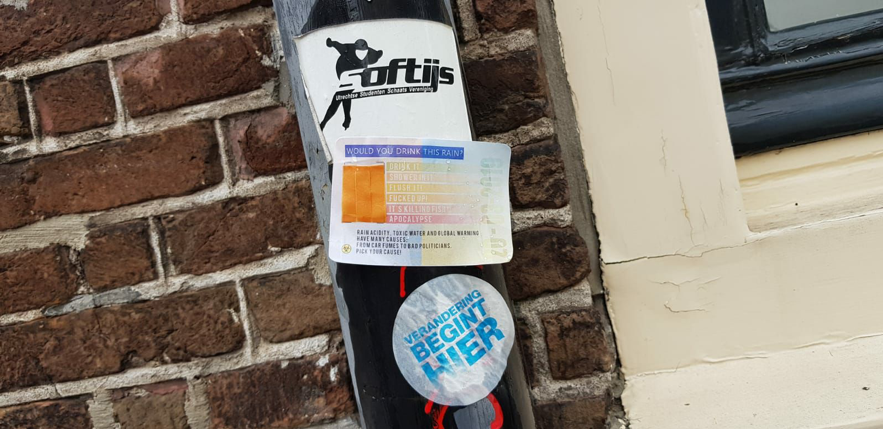
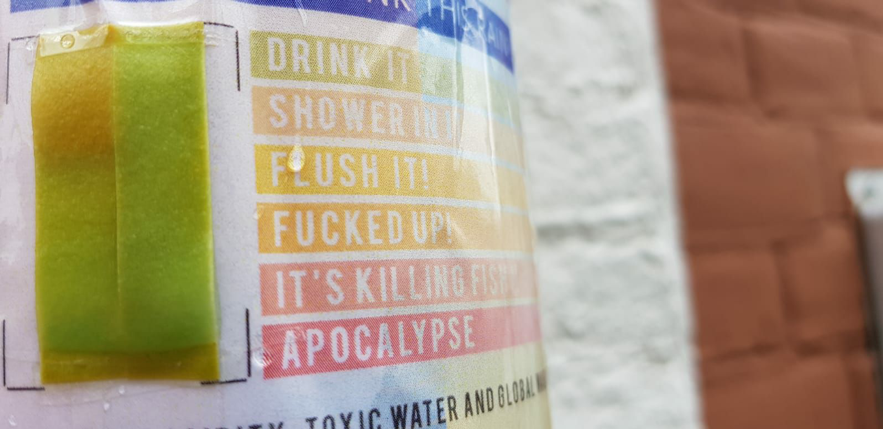
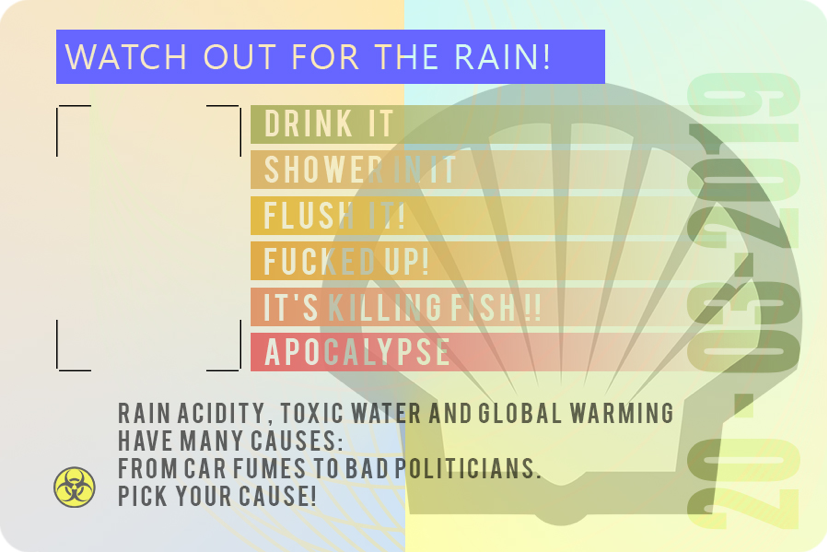
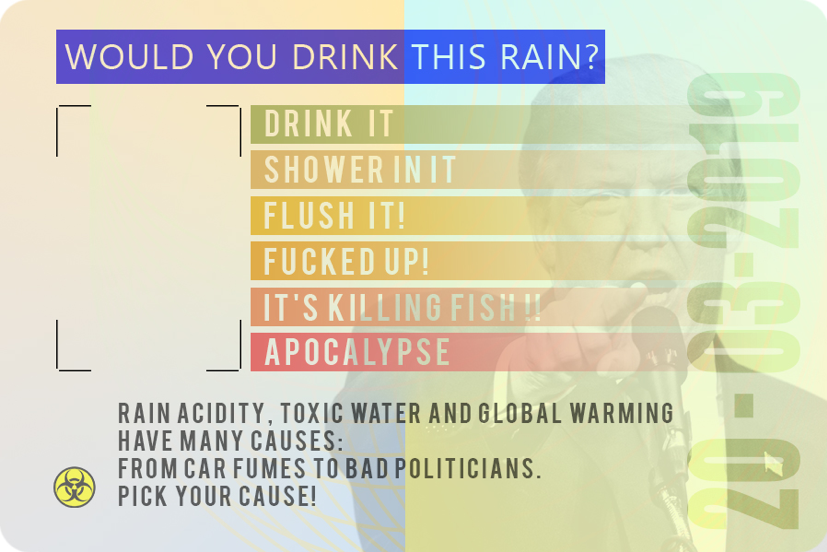
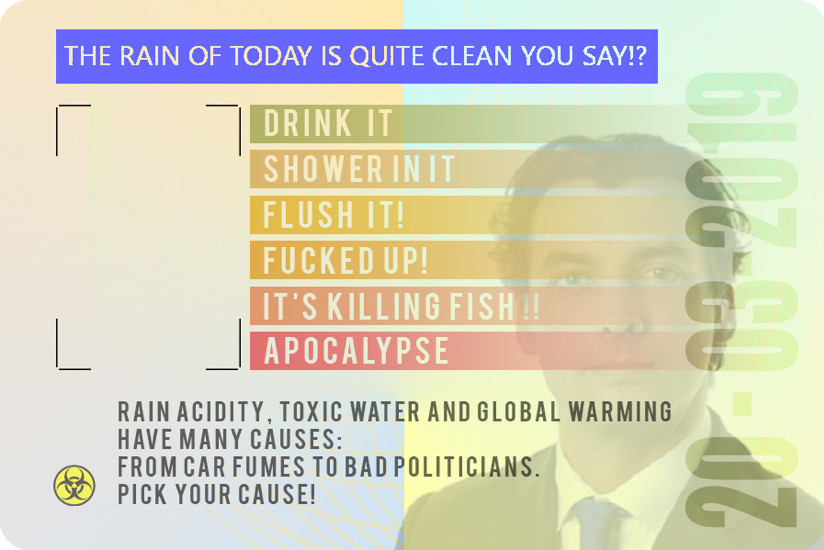
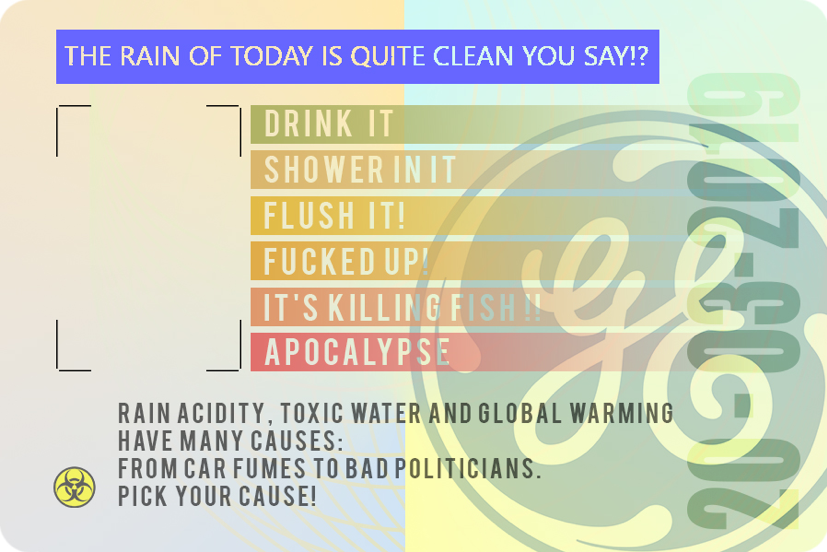
To think of the design concept that will take center stage in this paper, to think of its subversive possibilities and the multiplicity of its meanings and connotations is a queer exercise in itself. To queer think that design concept or the two-day pressure cooker workshop from which it stemmed and the process of thinking and creating that it entailed, is to open these processes and ideas to a critical stance that allows for a denaturalization of normative conceptualizations of the world. It allows for these creative moments to result in a design concept, an object of intervention, that allows for thinking queer; that is, it allows to open that thinking to a critical stance that questions and contests set ideas and norms, as well as the power structures from which they arise.[1]In this sense, I find it interesting here to pay attention to Florian Hadler and Joachim Haupt’s (2016)idea of interface critique. While reflecting on technology, on the role that technological interfaces play in our current world, they point out that “apparatuses and applications are not purely passive tools but active agents, creating the subject of the user” (Hadler and Haupt 2016, 7). Following this, they approach the idea of interface critique as an analytical tool to explore the multiple connections between subjectivity, interfaces and conceptualizations of the world (Hadler and Haupt 2016, 10).
However, I would like to suggest that the notion of interface cannot be simply or unproblematically restrained to technological objects. To think of interfaces results in a much more useful tool when applied to wider and multiple ends, material or not, articulated by digital technologies or by the materiality of the spaces we inhabit. In this sense, I would like to propose to think of interfaces as spatial/temporal frames where competing discourses articulating social, cultural and political intelligibility meet, and where power, and power relations, are bolstered and contested.[2]An urban interface would then be a dynamic time/space frame intimately bounded to the objects and subjectivities which it generates and from which it itself arises in the first place. Here, it would be important to bear in mind the notion of intra-action (Barad 2007): as opposed to the idea of interaction where different elements are thought of as independent and preexistent, in intra-action those elements are constituted and generated in that same intra-active moment.[3]In this sense, urban interfaces, objects and subject positions would be intra-actively constitutive of each other. Hence, objects within those interfaces would play a critical role in the discursive, intelligible configuration of that very interface. And this takes me precisely to the idea behind the lines that follow: A design concept, and object of intervention, can work as a tool that, within its constitutive position in an urban interface, has the potential to expose and subvert the myriad, apparently disconnected discourses and power relations articulating social/cultural understandings of the world.
What I propose for this paper is an analysis of the design concept—Who’s the Rain Today???—that resulted from the pressure cooker workshop from the seminar series The Right to the City,from the Research School for Media Studies (RMeS), at Utrecht University. I will explore this design concept as an object of intervention the role of which is precisely to queer and expose the invisible links between apparently disparate ideas and the power relations that sustain them. I will analyze the theoretical, creative and critical standpoints behind its design as well as the possible diffractive connotations, understandings and ideas resulting from its placement within material, urban locations. For this, I will divide my argument in three sections: In a first section, I will address the pressure cooker workshop and the notion of object of intervention, while reflecting on the idea of critically making and critically made objects (Hertz 2018). In a second section I will turn to the critical and creative process of designing that object of intervention, its characteristics and its role within its urban frame, while paying attention to ideas like “the right to the city” (Harvey 2008). In the third section I will explore the diffractive nature of the urban interfaces for which the design concept is intended, as well as its potential for thinking differently, to the possibility of enabling a tentacular thinking (Haraway 2016), that objects of intervention, such as Who’s the Rain Today???, have in our current world. Following this, I will conclude this paper with a brief reflection on the points I mentioned above in relation to queer thinking.
Critically Making an Object of Intervention
When I first faced the workshop The Right to the City, I was not sure what to expect. I was placed in a team with people I barely knew, or whom I just met at that moment; people with completely different perspectives on art, creative knowledge and urban interventions. Furthermore, the four ideas that were given to us to use as a core for the design concept we had to come up with—water, station, sustainability and sticker—seemed to me completely dislodged from my theoretical comfort zone. However, this multiplicity of standpoints, this diffractive way to approach the task ahead of us, as well as the apparent randomness of the assigned core ideas, proved to be very fruitful when revealing the connections that actually work beyond the realm of visibility. Invisible connections that point to the power relations articulating society at large, and which by the end of the two-day workshop took shape in the design concept Who’s the Rain Today???[4]But how did these connections take shape in this particular design concept? How did the creative and critical process of designing this urban intervention bring these connections to the fore? And how did the resulting concept, the object of intervention, reflect this critical process?[5]
In order to address these questions, I find it useful to turn to Garnet Hertz’s reflections in “What is Critical Making” (2018). In that article, Hertz explores the tension between the process of designing and the object which results from that process; a tension between abstraction and materiality. As he argues, this tension becomes explicit in the relationship between two modes of critical engagement: critical making and critical design. If in the former what matters is the process of thinking and creating, while the final product takes a secondary role, in the latter this emphasis is reversed. What Hertz proposes is a middle ground where neither process nor object are left behind. He proposes a turn toward the critically made object; an object that, being a critical tool in itself, brings to the fore the process from which it is made, thus, enabling a material manifestation of the practice of creating. This critically made object would be an object of and for thinking; as he argues: “Objects are effective as things to think with.… Critical objects can hit like an emotional sledgehammer if thoughtfully implemented” (Hertz 2018, Par. 9). Hence, this idea of critically made object would fit the approach that resulted from the pressure cooker workshop: an object of intervention. Nonetheless, my intention is not to conflate both terms; that is, critically made objects and objects of intervention. While for Hertz an object, critically made or not, remains solidly grounded in materiality, the idea of object of intervention departs from these grounds. Although it is true that the physical, material object that took shape in Who’s the Rain Today???can be said to share some of the premises that Hertz explores, objects of intervention can take multiple, diffractive shapes and forms; material or not; digital or physical.[6]The object in object of intervention points to the constitutive element in the subject formation; an object that plays a pivotal role in the way we understand ourselves and the spaces we inhabit, and which can, in turn, alter the systems of intelligibility articulating society.[7]An object of intervention would then be intimately linked to those discourses and power relations that regulate the urban interfaces—that is, the spatial/temporal frames articulating social intelligibility—as well as the role they play in the configuration of social and cultural relations.
But, Really… Who’s the Rain Today???
However, how is Who’s the Rain Today???, as an object of intervention, linked to the multiple invisible entanglements I mentioned above? Let me once more return to the process of critical, creative thinking of the design concept. When facing the four main ideas that were given to us, two of them—water and sustainability—swiftly became the main drive behind the thinking process. We kept delving into issues of environmental damage, water quality, the ways water acidity affects flora and fauna. And, at first sight, these ideas played a central role in the final design; in fact, global warming is explicitly mentioned in the sticker that holds the material side of the object of intervention. These thoughts soon took us to the way people use, or misuse, water; they took us to the availability of clean water as a resource for the citizen, even in a country where water abounds. The idea of water as abundant in country like the Netherlands took, at this point, identitary connotations: The Dutch as a citizen of a country of water; a country where water and rain take symbolic connotations in the collective construction of identity. The answer to the environmental problems and the misuse of water seemed clear then: We should imagine devices to capture rainwater; buildings built with roofs capable of taking rainwater in order to be used by its inhabitants; structures arounds the city that would redistribute rainwater. However, these answers were revealing themselves intensely problematic as soon as they were mentioned: Is really rainwater that clean? Should it be treated in order to be used? And if rainwater is not clean, who is responsible for its acidy and toxicity? Nonetheless, the problems did not stop there. Some of the questions took even more complex hues: Who are the citizens with the financial means to afford those devices? Who are those who can afford these newly constructed buildings? To what neighborhoods would those structures redistribute the water?
In the current political/historical scenario, social experience within a city, and, more broadly, social systems and structures in general, are neatly entangled in economic frames; frames of neoliberal market consumption and exploitation regulating social intelligibility.[8]And these economic frames, which are easily recognizable in geopolitical contexts such as those of Europe or the United States—and where the Netherlands is no exception—also articulate social/political regulation and legibility on a global scale, demarcating and conditioning the right to the city of each individual citizen. But what is this right to the city? What are its connections to the multiple urban interfaces and the objects of intervention? David Harvey (2008)addresses the process of violence and dispossession at the core of capitalist and neoliberal policies restructuring and reshaping the material, urban spaces that comprise the city. As he points out regarding the historical process of reshaping of cities like New York, Paris or Beijing, the urban design and expansion of certain cities is structured according to the forces of market value and accumulation of capital; and this expansion entails a process of dispossession and displacement where certain populations are banned from those spaces they used to inhabit (Harvey 2008, 33-37). Following this argument, the right to the city would be a collective drive to regain, reclaim and transform, not only urban spaces, but also urban resources—with all its diffractive connotations—that have been banned for certain portions of the populations. In his words, “the right to the city is far more than the individual liberty to access urban sources: it is a right to change ourselves by changing the city” (Harvey 2008, 23).
So, with this idea of the right to the city in mind, and regarding the questions that arose in the process of designing the object of intervention, it would be important to ask: Which citizens can claim their right to clean water? Who can and who cannot claim their right to citizenship? To be a recognized citizen plays a pivotal role in the way we can access or claim our rights, even if that right is the right to clean water. And to be deprived of that recognition can entail devastating consequences, it can falter the access to protection and means of conditions of livability. After all, who has the right to an ID?[9]Rainwater, clean water and ID seemed then to have more in common than firstly expected, thus shaping the material part of our object of intervention: A sticker with the shape of an ID; a rainwater ID where the space reserved for the picture of the document holder is replaced by a laminate sensitive to the acidity/toxicity of water. This sensitive area is accompanied by an explanatory six color-code ranking which indicates the toxicity of the water that rains down on us; the toxicity of an urban/natural resource the access to which points to the entanglements between society, culture, politics and economy.[10]Hence, this water/sensitive picture area brings to the fore several questions: Who is the bearer of an ID? Under what conditions does that ID bearer access their rights? And, if those rights can be thought of in terms of rainwater, its quality and its relationship to citizenship: who’s the rain today?
However, at this point, it would be fair to ask: what is the role of the two remaining core ideas that were given to us? What part do station and sticker play in the final design of this object of intervention? These two ideas, material as they sound, actually articulate the more intangible, transient and tentacular side of the object of intervention; a side to which I turn now.
Vandalizing Stickers, Diffractive Spaces and Tentacular Thinking
One of the main intentions of Who’s the Rain Today???, an intention resulting from its own design process, is to enable a tentacular thinking (Haraway 2016); that is, a way of thinking collectively, a way of thinking differently of the entanglements that bind and connect ideas and issues that, at first glance, seem unrelated and disconnected. In fact, when addressing the symbiotic/sympoietic[11]nature that articulates our world—a symbiosis/sympoiesis that blurs the lines between nature/culture, human/non-human and organic/inorganic—Haraway uses the figure of the cat cradle; a game where the generation and transformation of a string figure depends on the collective orchestration of different elements (Haraway 2016, 30-57). But how can we apply this tentacular thinking, this sort of cat cradle of issues and ideas, to this particular object of intervention? And what is the role that the two remaining core ideas—station and sticker—play in it? Let me apply this tentacular thinking to the first of these ideas in order to connect the apparently disconnected, independent elements that play a central role in it: Stations are diffractive, tentacular spaces; they are multiple and ever-changing urban interfaces where myriad subjectivities and positionalities encounter and constitute both the space and the experiences resulting from it. If we think of a train station, it could be argued that this urban interface and its users intra-actively constitute each other: a station is a building, but in order to be so it needs passengers; accordingly, for passengers to become such, they need to be in a station. But this is not enough; passengers need to intend to travel somewhere, and only by reaching their goal, they become passengers. At this point another element intra-acts with the station: the vehicle itself. But those same vehicles can pass by or stop for different reasons in other buildings without turning those into stations. And, while it is true that the presence of railways helps condition the legibility of certain spaces as stations, if we think of stations of other sorts—such as bus stations—the transient/temporal condition of vehicles and passengers highlight the intra-active nature of such urban interfaces.[12]Additionally, those stations are not perceived and experienced by every subject position in the same way. It is not the same to travel in the morning or at night, for business or for vacations, to do it voluntarily or not, as in the case of deportations. But how can we link these diffractive, temporal spaces to the rainwater ID behind this object of intervention?
The rainwater ID partakes in the diffractive, temporal nature of the stations in the sense that its own design changes according to the different entangled endpoints it signifies.[13]Furthermore, if I now turn to the idea of sticker with regard to both stations and the diffractive nature of the rainwater ID design, the more transient and tentacular side of the object of intervention is revealed. These stickers/IDs are designed to by distributed among certain groups collectively organized to massively stick the IDs to trains, buses and urban objects and structures within and around those spaces regarded as stations. In addition, the sticker carries the date of this massive, flash intervention in which the stickers are placed. This flash intervention is meant to be repeated at different moments throughout the year in order to trace the variations in the acidity/toxicity of the water, and with the aim to connect it to social/political/economical actors which generally are regarded as completely detached from ideas such as the quality of the water that rains on us. In other words, this object of intervention is designed as a tool for critically vandalizing urban spaces in order to call attention to the tentacular entanglements organizing our world; it is meant to highlight the invisible connections that bind objects, subjects and spaces, as well as trigger a tentacular thinking in those passengers—with all the hues and connotations of that term—who encounter it in their life-travel.In other words, Who’s the Rain Today???is designed to rethink the urban interfaces to which it is aimed as dynamic time/spaces with the potential to reveal and contest the multiplicity of social, cultural, political and economic entanglements from which they arise.
A Queering, Tentacular Final Reflection
Before ending this analysis, I would like to look back at the idea of queer thinking and its relation to tentacular thinking. As with other notions I explored, such as critically made objects and objects of intervention, these are two ideas that cannot be conflated. Queer thinking is a critical stance from which to expose, contest and subvert normative, discursive structures that are taken as natural, fixed and stable; structures which regulate social/cultural systems of representation and intelligibility. In turn, tentacular thinking can be regarded as an important tool for queer thinking; in fact, to apply a tentacular way of thinking entails a queering of the mere idea of disconnection and separability. When queer and tentacular thinking Who’s the Rain Today???,we—the team behind its design and whose collective, creative collaboration was critical for its development—attempted to expose the tentacular entanglements that bind issues generally perceived as randomly disconnected such as rainwater, citizenship, economy and corporations. Of course, this design concept, this object of intervention, remains widely open to further critical and creative development; it has multiple ends of which we did not think of; it has aspects where obvious and much needed improvement abound.[14]After all, this was just a two-day workshop where ideas and questions boiled, and which would have certainly kept on boiling well beyond those two days. But in the end, it was a critical, creative and very interesting exercise of reflection and exploration of the ways in which an object of intervention, with all its constitutive connections the urban interfaces, can highlight and expose the social/cultural/political entanglements articulating our world.
References
Barad, Karen. 2007. Meeting the Universe Halfway: Quantum Physics and the Entanglement of Matter and Meaning. Durham: Duke University Press.
———. 2014. “Diffracting Diffraction: Cutting Together-Apart.” Parallax20 (3): 168–87.
———. 2015. “Transmaterialities: Trans*/Matter/Realities and Queer Political Imaginings.” GLQ: A Journal of Lesbian and Gay Studies21 (2–3): 387–422.
de Lange, Michiel. 2019. “The Right to the Datafied City: Interfacing the Urban Data Commons.” In The Right to the Smart City, edited by Rob Kitchin, Paolo Cardullo, and Cesare Di Felciantonio. Bingley: Emerald.
Foucault, Michel. (1978) 1990. The History of Sexuality: Volume I An Introduction.Translated by Robert Hurley. New York: Vintage Books.
———. 2008. The Birth of Biopolitics: Lectures at the College de France, 1978-1979. Edited by Michel Senellart. (2004) Translated by Graham Burchell. New York: Picador.
Freeman, Elizabeth. 2010. Time Binds: Queer Temporalities, Queer Histories. Durham/London: Duke University Press.
Hadler, Florian, and Joachim Haupt. 2016. “Towards a Critique of Interfaces.” Kaleidogramme139: 7–13.
Haraway, Donna J. 2016. Staying with the Trouble: Making Kin in the Chthulucene. Durham: Duke University Press.
Harvey, David. 2008. “The Right to the City.” New Left Review53: 23–40.
Hertz, Garnet. 2018. “What Is Critical Making?” Current, November 13, 2018.
Kleinman, Adam. 2012. “Intra-Actions: Interview with Karen Barad.” Mousse34: 76–81.
Kristeva, Julia. 1982. Powers of Horror: An Essay on Abjection. Translated by Leon S. Roudiez. New york: Columbia University Press.
Lacan, Jacques. 2006. Écrits. The First. Translated by Bruce Fink. New York/London: W. W. Norton & Company.
Love, Heather. 2014. “Queer.” TSQ: Transgender Studies Quarterly1 (1–2): 172–76.
Salamon, Gayle. 2010. Assuming a Body: Transgender and Rhetorics of Materiality. New york: Columbia University Press.
Somerville, Siobhan. 2007. “Queer.” In Keywords for American Cultural Studies, edited by Bruce Burgett and Glenn Hendler. New york: New York University Press.
Spade, Dean. 2015.Normal Life: Admnistrative Violence, Critical Trans Politics, and the Limits of Law. Durham: Duke University Press.
Verhoeff, Nanna, and Karin van Es. 2018. “Situated Installations for Urban Data Visualization: Interfacing the Archive-City.” In Visualizing the Street: New Practices of Documenting, Navigating and Imagining the City. Cities and Cultures., edited by Pedram Dibazar and Judith Naeff, 117–36. Amsterdam: Amsterdam University Press.
[1]See authors like Siobhan B. Somerville (2007)or Heather Love (2014)for definitions of queer as a tool for critical thinking and denaturalization of power structures and systems of representation, and authors like Karen Barad (2015)or Elizabeth Freeman (2010)for analyses and explorations of queer as such a tool.
[2]Here, it is important to think of power as multiple and polymorphous, emanating from and permeating every instance of social interaction (Foucault [1978] 1990, 93-95), and discourses as power mechanism which support and contest each other (Foucault [1978] 1990, 100-102), bolstering power but also rendering fragile.
[3]Se Barad (2014)and Kleinman (2012)for further explanations of the notion of Intra-action.
[4]The rest of the team members that accompanied me in this particular creative process –and whose critical stance and experience were both critical for the final result, as well as enlightening for my current argument—were Karoliina Haapalehto, Brian Hulsebos, Dirk Lent, Lidewei Reitsma.
[5]At this point, I would also like to acknowledge the role of the organizers of the workshop who, during the two-day design period, assisted the different teams, including ours, and offered important insights that helped the resulting designs take their critical form: Nanna Verhoeff, Michiel de Lange, Sigrid Merx, Lotte van der Molen, Fabian van Sluijs, Lenno Verhoog, Saskia Freeke and Helen Pritchard.
[6]Here, I would like to call attention to the case studies explored by Michiel de Lange in “The Right to the Datafied City” (2019). While addressing the idea of the commons as an interface in itself, de Lange explores the role of data in the way urban spaces can be understood and reclaimed by citizens. Inthese cases, my idea of an object of intervention would be shifted to, not only a digital position, but also to the idea of the commons in all its temporal/spatial connotations: The object of intervention would take the shape of those moments in which certain citizens gather under one concrete goal, such as in the case of the users of a digital platform that unite in order to produce physical changes in their neighborhood (de Lange 2019, 6).
[7]The subject-object dyad is a core notion within psychoanalytic theories. The object has been explored in relation to its role in the subject formation (Lacan 2006), abjection and the setting of limits of the normative social configuration (Kristeva 1982)and, more recently in phenomenological and psychoanalytic accounts, to blur the line between subject/object, materiality/psychic image (Salamon 2010).
[8]In a series of lectures delivered in 1979, Michel Foucault (2008)analyzes neoliberalism as a system of knowledge production articulating social/cultural intelligibility in economic terms, which originated in Germany and the United States in mid-twentieth century, and which by the time he delivered those lectures had spread through the West and beyond.
[9]See authors like Dean Spade (2015)for an exploration of IDs, and other governmental and administrative documents, as power technologies regulating conditions of livability and exclusion according to differential markers that span from gender, religion, class or migration status.
[10]The color-code ranking, which spans from “Drink it” to “Apocalypse”, corresponds the green-to-red color variation of the sensitive area that reacts to the level acidity in water.
[11]Haraway uses the term sympoieis—in opposite relation to autopoiesis—as a way to call attention to the symbiotic entanglements that are constitutive and productive of the material/discursive structures that sustain us (2016, 60; 97-98).
[12]In relation to the intra-active nature of these spatial/temporal frames, I find it interesting to turn to Nanna Verhoeff and Karin van Es (2018)exploration of the city as a dynamic data archive. As they argue in the analysis of their case studies, certain urban interventions where critical and creative stances meet reveal the relational, transient nature of the processes regulating the legibility of urban spaces: “As a material structure, the installation [of an urban intervention/creative urban experiment] is layered. Not only materially and spatially but also temporally, in the sense that is both relatively permanent and radically temporary” (Verhoeff and van Es 2018, 122). Hence, it could be argued that they reveal the intra-active processes configuring the spatial/temporal archives that conform the city.
[13]Instead of the superimposed image of a queen, king or a national symbol that usually demarcates the national identitary scope of IDs or passports, different rainwater IDs portray a different referent signifying on local and global scales: from politicians such as Thierry Baudet and Donald Trump, to corporations like Shell and General Electric.
[14]As suggested during some of the different presentations of the project in front of other intervention designers, elements such as a web page could help further develop the collaborative integration of the project with those to which it is aimed; that is, the people who encounter throughout the urban spaces.
About the author
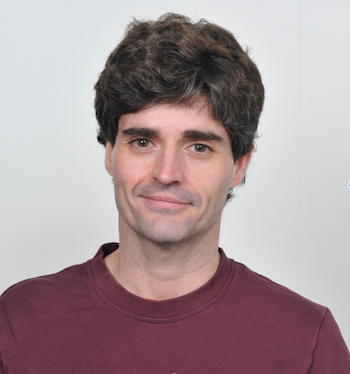
Alvaro Lopez is pursuing a research master’s degree in Gender Studies at Utrecht University and participated in the Urban Interfaces graduate course as well as the seminar series The Right to theCity from the Research School for Media Studies (RMeS). His fields of interest are queer and trans studies, and his current research deals with the discursive/material connections between conditions of (in)visibility/intelligibility and the media in a broad sense, as well as other cultural manifestations.

